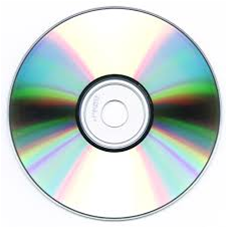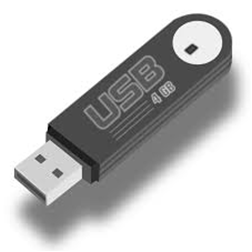Auxiliary Memory
Introduction
Auxiliary memories are storage devices that allow for the long-term or semi-permanent retention of data and their retrieval when needed. Unlike volatile memory (RAM), which is used for temporary calculations, auxiliary memories are designed to store information for the long term.
1. Magnetic Tapes
-
Type of Storage: Magnetic tapes are considered a form of secondary storage, meaning they are primarily used to store data for the long term.
-
Sequential Access: Magnetic tapes work on a sequential access principle, meaning that to access a particular piece of data, the system must read or write data in a specific order. Direct access to individual data points is difficult and slow.
-
Applications: Although less common today with the advent of newer digital technologies, magnetic tapes are still used in specific applications such as archiving and data backups.

2. Optical or Magneto-Optical Discs (CD-ROM, DVD, etc.)
-
Optical Technology: These media use light beams (lasers) to read and sometimes write data. The laser detects light reflection from the disc's surface, which is structured in small pits representing digital information.
-
Storage Capacity:
-
CD-ROM: A CD-ROM disc can hold about 780 MB of data.
-
DVD: A DVD can hold much more data, approximately 4 GB.
-
-
Types of Discs:
-
Read-Only: Some discs, such as CD-ROMs, can only be read, meaning users cannot write new data to them.
-
Writable: Discs such as CD-R, DVD-R, and DVD-RW can be written to one or more times, allowing data to be stored and modified or deleted.
-
-
Applications: CD-ROMs and DVDs are commonly used to store software, videos, music, and for data backups.

3. Flash Memory
-
Definition: Flash memory is a type of mass storage that uses semiconductor technology to store data in a rewritable format. It is non-volatile, meaning that data is preserved even when there is no power.
-
Characteristics:
-
Rewritable: Flash memory can be written to and rewritten multiple times, making it more flexible than other forms of non-volatile storage like hard drives.
-
Speed: Flash memory is generally faster than hard drives and less prone to mechanical failure since it contains no moving parts.
-
-
Applications: Flash memory is used in USB drives, SD cards, SSD drives (Solid State Drives), and is also integrated into mobile devices like smartphones and tablets.

Conclusion
Auxiliary memories play a critical role in long-term data storage. Each type of memory has its advantages and disadvantages depending on specific needs related to capacity, speed, cost, and durability. While magnetic tapes are more commonly used for archival purposes, optical discs and flash memory are more widespread in everyday environments for their capacity and flexibility.
